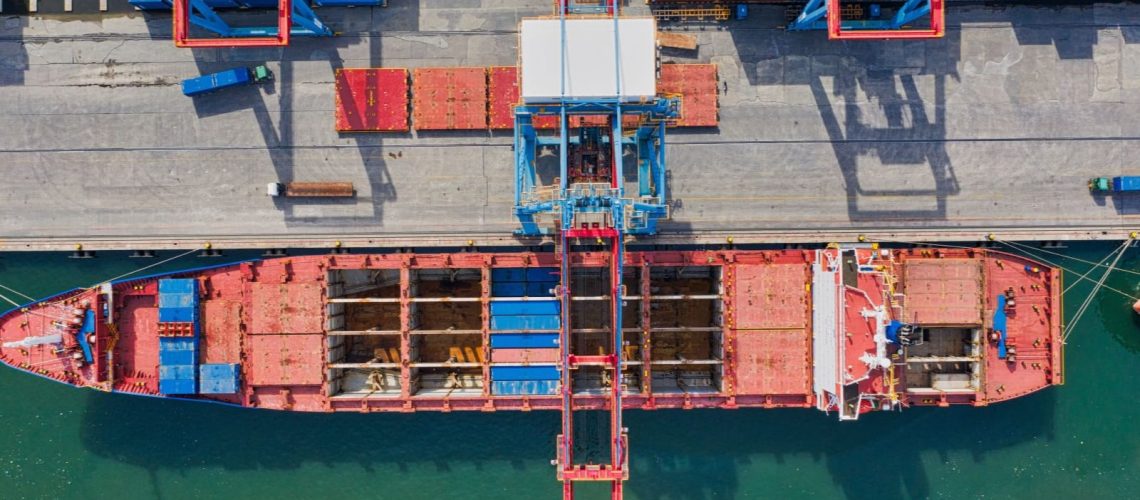Whether a product is sitting in a warehouse or being shipped across the country or across the globe, if temperature must be maintained the product is part of the cold chain. Ten years ago, the term “cold chain” referred only to products that needed to be chilled or cooled. Now it also includes products that must be kept at room temperature and those that must be protected from cold and heat spikes.
As more and more of these products enter the supply chain, the term “cold chain” has morphed to “controlled temperature.”
Seafood and pharmaceuticals are two obvious examples of products needing controlled temperature handling, but there are many others that aren’t obvious. Chemical products (like paints and coatings), sometimes use temperature controlled shipping to prevent them from separating so they will maintain consistency and, therefore, perform better. Fruits and vegetables are another example. Cooling them immediately after they are picked, extends their shelf life by several days. Even potatoes – a rugged crop – experience changes in sugar content based upon their storage temperatures.
Controlled-temperature shipping, for pharmaceuticals, is a $13.4 billion global industry, and is predicted to grow 5-6% per year through 2021, according to the 2017 edition of Pharmaceutical Commerce’s annual Biopharma Cold Chain Sourcebook. This is driven by the the growth of products requiring refrigerated handling and by the global growth of the pharmaceutical industry. The Sourcebook, for example, projects that the pharmaceutical industry, valued at nearly $1.2 trillion in 2015, will grow 41% between 2015 and 2021, and that products requiring controlled temperatures will increase by 70% during that timeframe.
Among pharmaceutical manufacturers, most temperature controlled products are shipped in the 2°- 8°C range, but the second most popular temperature range for shipping is 15°- 25°C – controlled room temperature (CRT).
While generally, products requiring controlled room temperature are stable, regulators are increasingly asking for proof that temperatures were maintained. In 2017, CRT products comprised nearly 17% of all pharmaceutical logistics costs, according to the Sourcebook.
Logistics providers are aware of the increasing need for controlling temperatures in multiple ranges, and are building out their facilities accordingly. Leading international carriers are building new warehouses with sections for frozen, cool, and controlled room temperature products. Some air cargo carriers offer dedicated aircraft for temperature-sensitive goods.
Railroads are providing temperature controlled shipping, with the ability to plug-in reefers. One international contract manufacturer in the life sciences just made a £20 million, 95,000 square foot expansion to its temperature-controlled warehousing, and routinely monitors temperatures during shipping.
Wireless Temperature Monitoring
As shippers and manufacturers deal with more temperature-sensitive products, they are taking steps to monitor those temperatures from manufacturing, all the way through storage, shipping, and final delivery.
This helps them ensure that products remain in safe, useable condition. They realise that equipment, no matter how new, sometimes fails. Accidents happen. Humans make mistakes. In one example, new logistics personnel, impressed with the thermal sensitivity of vaccines and the potentially deadly repercussions of temperature excursions, have placed packages in coolers until refrigerated carriers arrived to transport them. As a result, some of those shipments froze, causing the very damage handlers tried to prevent. Other times, truckers actually disconnected cargo refrigeration equipment to conserve fuel.
During transshipment, when cargo containers are offloaded from ships and transferred to other vessels, reefers may not be plugged into shore power. Likewise, once loaded, they may not be plugged back into the ship’s power.
How products are packed makes a huge difference, too. There’s a common misconception that carriers’ refrigeration units eliminate the need for pre-chilling.
The reality, however, is that without pre-chilling, items in the centre of the packaging may never reach the proper temperature. Oranges, for example, should be cooled to 38°F at the loading shed. Instead, they too often are packed at 70°F to 80°F and shipped.
Food layers say that temperature monitoring is one of the best things shippers can do to improve food safety and minimise recalls. Temperature monitors, affixed internally or to packages’ exteriors, provide
“Merely packing a product in ice and putting it on a plane or loading it into a reefer is no longer good enough.” incontrovertible proof of the environmental temperatures sensitive goods experience as they move throughout the supply chain.
Regulations Demand Proof of Temperature
While the business case to deploy temperature monitors is compelling, their use is increasingly mandated by regulators throughout the world. In the U.S., the Hazard Analysis and Critical Control Point (HAACP) is a standard requirement with its own safety verification process.
The FDA is paying closer attention to temperature than ever, for food as well as pharmaceuticals and biologics. The Food Safety Modernization Act, for ex ample, tightens safety and verification requirements for all types of foods. The Sanitary Transportation Rule was implemented as part of that Act in 2017 for larger shippers and in 2018 for small firms. Controlling and monitoring temperatures during transit is a key component of these rules.
The highly-regulated pharmaceutical industry is experiencing even stricter requirements, as health authorities throughout the world adjust their national pharmaceutical good distribution practices to insist upon documentation proving proper temperatures have been maintained throughout shipping. Without evidence that pharmaceuticals have been shipped and stored at proper temperatures, many nations will refuse to accept shipments.
Temperature Monitoring Options
A wide variety of temperature monitoring technology is available. For example, indicators that change colour to flag temperatures that are too hot or too cold are an inexpensive solution for items that need simple go/no go information. Temperature recorders that provide more detail, such as the length and extent of temperature excursions, are a good solution for more nuanced products, which can be diverted to closer markets or evaluated to determine their safety or viability. Because advanced monitors record temperatures at set intervals, shippers also gain insights into whether a package was opened — during customs clearance, for example — and when and where temperature excursions occurred.
That information is important for specific shipments, but also helps provide visibility throughout the entire cold chain. For example, by routinely monitoring shipments, shippers can develop a profile of temperature excursions correlated to such metrics as time of year, type of packaging, carrier, route, and destination. With that data, supply chain managers can make adjustments to minimise temperature excursions. For example, one pharmaceutical shipper used the information to alter the date it changed from winter to summer packaging.
Some of the more sophisticated solutions include wireless connectivity and cloud based reporting.
These capabilities enable supply chain or logistics professionals to be alerted instantly when – or before – excursions occur, enabling them to reroute the shipment or contact local agents to re-ice the product.
Reporting software takes the data to the next step, by making it useful long-term. By charting trends across multiple lanes for current or historic shipments, supply chain managers can access the information they need and present it using graphics that can be understood at a glance. Thermonitor sends both email, sms and push alerts and companies can monitor multiple offices at once.
An analysis of monitoring data also helps establish accountability when excursions occur, and thus minimise the chances of recurrence. For example, when GPS data from a data recorder determines a temperature excursion occurred on a shippers’ own loading dock, the shipper can retrain its staff. If the excursion occurs in transit, it can work with its carriers to develop solutions, such as changing its labelling to make the temperature requirements more obvious and including information cargo handlers can use when excursions are imminent. This level of cold chain visibility is part of a comprehensive quality management system that is, increasingly, a part of best practices for controlled temperatures.
Merely packing a product in ice and putting it on a plane or loading it into a reefer is no longer good enough.
Increasingly sensitive products demand temperature monitoring to prove to receivers, regulators, insurers, and lawyers whether they were transported at the proper temperatures. And, monitoring temperatures during shipment is just good business sense.
Companies do their utmost to ensure their products arrive in their most usable condition. If their products don’t, the company deserve answers. Wireless temperature monitors can help provide those answers.


